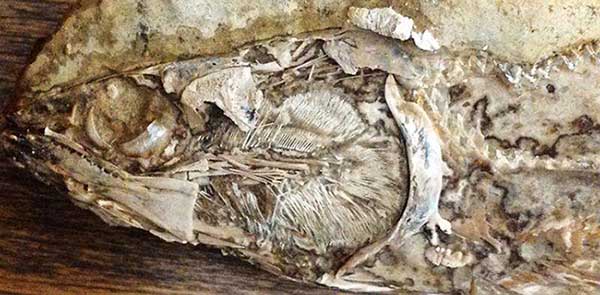Heart Fossils
The first fossilized heart ever found in a prehistoric animal PhysOrg - April 20, 2016

Paleontologists and the famous Tin Man in The Wizard of Oz were once in search of the same thing: a heart. But in our case, it was the search for a fossilized heart. And now we've found one. A new discovery, shows the perfectly preserved 3D fossilized heart in a 113-119 million-year-old fish from Brazil called Rhacolepis. This is the first definite fossilized heart found in any prehistoric animal.
For centuries, the fossil remains of back-boned animals - or vertebrates - were studied primarily from their bones or fossilized footprints. The possibility of finding well-preserved soft tissues in really ancient fossils was widely thought to be impossible. Soft organic material rapidly decays after death, so organs start breaking down from bacterial interactions almost immediately after an animal has died. Once the body has decayed, what remains can eventually become buried and what's left of the skeleton might one day become a fossil. The discovery of complete soft tissues preserved as whole internal organs in a fossil was a bit of a Holy Grail for paleontologists. Such finds could contribute to understanding deeper evolutionary patterns as internal soft organs have their own set of specialized features.
PALEONTOLOGY INDEX
ANCIENT AND LOST CIVILIZATIONS
PHYSICAL SCIENCES INDEX
ALPHABETICAL INDEX
CRYSTALINKS HOME PAGE
PSYCHIC READING WITH ELLIE
BOOK: THE ALCHEMY OF TIME
DONATION TO CRYSTALINKS
ADVERTISE ON CRYSTALINKS
